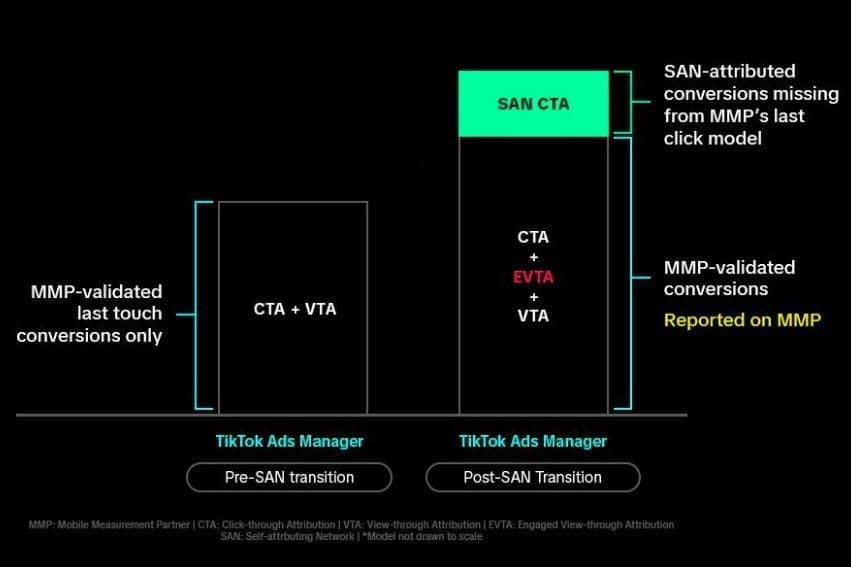
TikTok is taking a significant step in helping advertisers better understand the impact of their ads on conversions with the launch of a new measurement tool called Engaged View-through Attribution (EVTA). This tool aims to provide creators with more insights into how their ads drive conversions and enable them to make data-led decisions for maximum campaign performance.
EVTA is a measurement tool introduced by TikTok that tracks conversions that occur after a user watches a video ad for at least six seconds but doesn’t click, and then converts within a seven-day attribution window.
By implementing EVTA, TikTok aims to provide a more comprehensive understanding of the impact of its ads on businesses. This goes beyond the traditional click-and-convert scenario, as TikTok recognizes that user behavior is not always solely driven by a simple click.
Want to brainstorm with our team on new ways to scale your business with YouTube Ads (and other performance video platforms)?
Join us for a free YouTube ad brainstorming session 👇
Key Benefits of EVTA
TikTok claims that EVTA offers several key benefits to advertisers:
1. Better Understanding of Ad Impact Beyond Clicks
EVTA allows advertisers to measure conversions influenced by views lasting six seconds or more. This means that even if a user doesn’t click on the ad, their engagement with the content can still have a significant impact on conversions. By gaining insights into these engaged views, advertisers can better understand TikTok’s impact on their business and adjust their strategies accordingly.
2. Enhanced Campaign Performance through High-Quality Signals
With EVTA, TikTok’s Ads Manager will receive more high-quality signals to optimize and enhance the performance of campaigns over time. By showing ads to users who are more likely to take action based on their engagement with the content, advertisers can fuel campaign performance and improve the overall return on investment.
3. Balanced Measurement Across Different Channels
TikTok aims to align its attribution methods with other platforms to ensure a fair comparison of performance. By doing so, advertisers can accurately measure and compare the results of their TikTok campaigns with campaigns on other platforms. This allows for a more comprehensive understanding of the overall performance and effectiveness of different marketing channels.
Combining EVTA with Self-Attributing Network (SAN)
To provide a more complete picture of how users are converting on TikTok, the platform recommends combining EVTA with its recently launched Self-Attributing Network (SAN). By leveraging both tools, advertisers can gain additional insights into ad response, engagement, and conversion data.
With this enhanced attribution methodology in place, the total conversions reported on TikTok Ads Manager include the following:
- Click-through (CTA) and view-through (VTA) conversions driven by last click and view that are currently validated and reported by MMPs.
- Engaged view conversions as measured by our new EVTA touch-point. These conversions are currently reported as Click-through (CTA) conversions on MMP reporting.
- Additional click-through (CTA) conversions driven by clicks on TikTok ads that are not currently reported in MMP’s last-click attribution model.

Read TikTok’s mobile measurement framework announcement in full for more information.
Want more content like this?
Don’t miss out on the latest news and updates from the world of Direct Response advertising! Subscribe to our newsletter today 👇
Want to brainstorm with our team on new ways to scale your business with YouTube Ads (and other performance video platforms)?
Join us for a free YouTube ad brainstorming session:
Like this post? Let's continue the conversation!
Get in touch with us by shooting us a quick email or tagging us on LinkedIn or Instagram, and sharing your thoughts. Your feedback helps us keep our blog relevant and interesting.
Get Our Newsletter
Need Help?
Get in touch with us for an insightful evaluation of your ads + actionable tips to help amp up your direct response revenue



